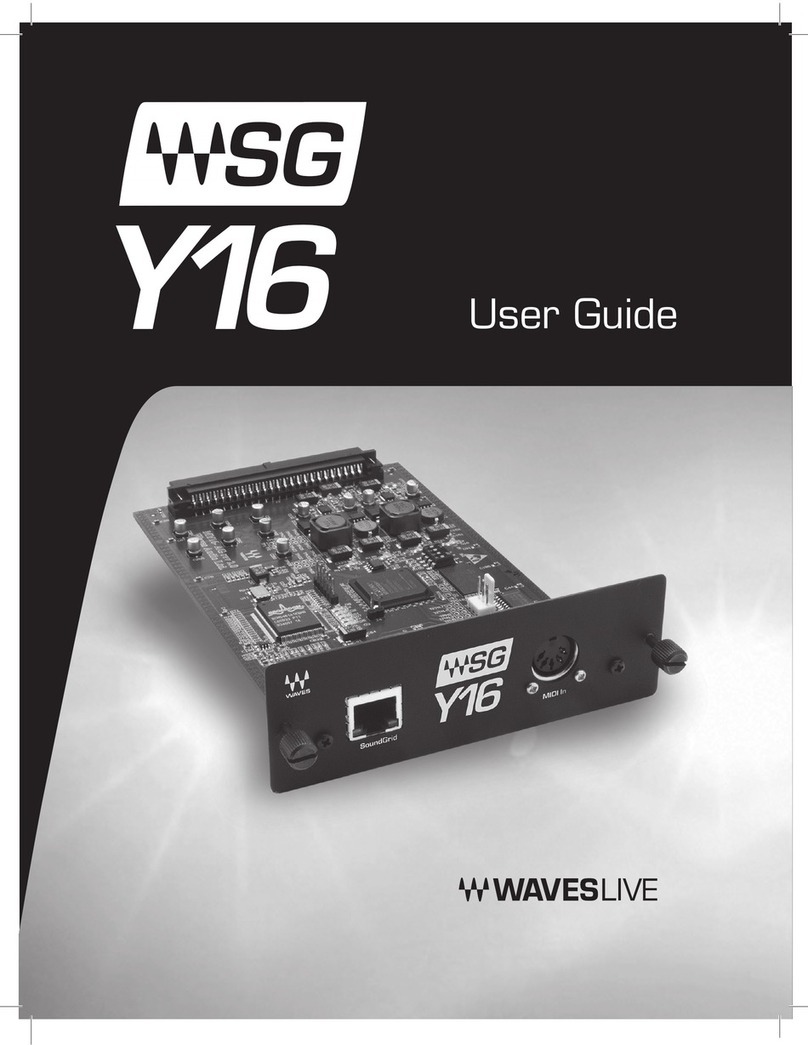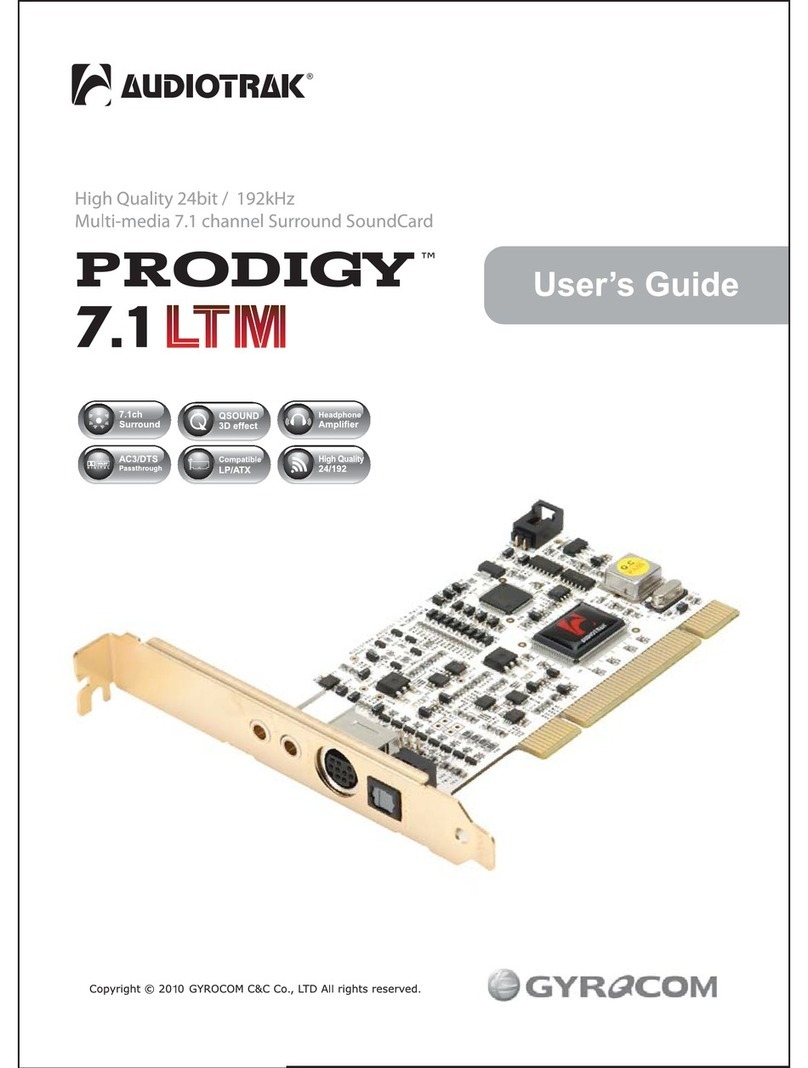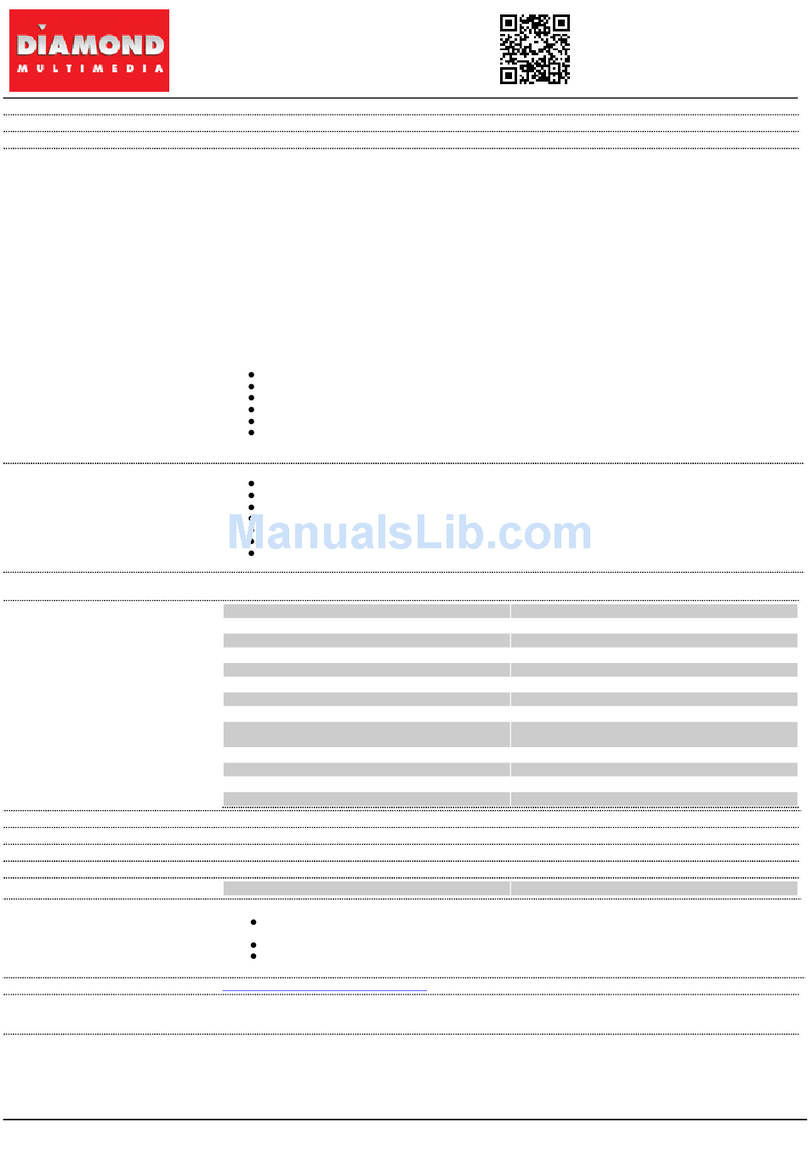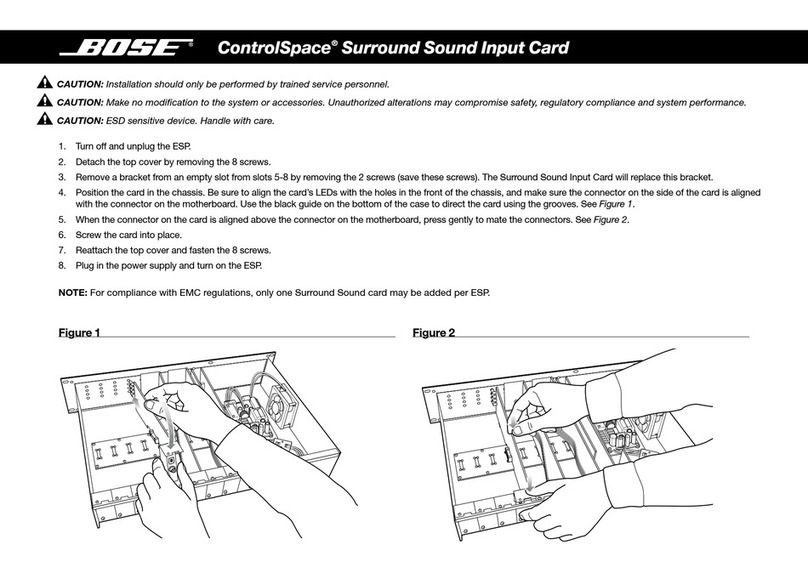Golding Audio DMS3000 Configuration guide

PAGE 1 updated 19/01/06
Golding Audio Ltd reserve the right to change specification of this or any product without prior notice being given. Golding Audio will not be held
responsible for any damage caused to any equipment or data, arising from use of the product mentioned herein.
Connection and General information
DMS3000 V2.20
MP3 Digital Audio Playback Card.
General
The DMS3000 is designed around industry standard MP3
compression technology. Audio data is stored on standard
multimedia cards (MMC). The DMS3000 series sound
stores can be recorded by the user with a suitable PC
equipped with an MMC card reader and sound card.
Message playback can be initiated in a number of ways
from a simple contact closure, RS485 or via text command
files assigned to a particular trip input giving an incredible
degree of control over the sound store.
Specification
Board Size 100x160x25mm
Supply 12-18v DC @ 200mA
Audio Compression MP3 (Mpeg1 Layer3)
Memory MMC 64MB to 1GB
Trip Input Lines 5v active HI or LOW selectable
Stop / Start input 5v active LOW
Run Output Open Collector (Max 25v 150mA)
Control Output Open Collector (Max 25v 150mA)
Audio Outputs Line 0db Nominal (600 ohms)
Treble Control +/- 10dB
Bass Control +/- 10dB
General PCB layout. ( FIG 1 )
ISP Port
In Circuit Programming port used to update the DMS3000 operating
system. NO USER FUNCTION.
Display Port
2 x 16 character display port used on some cased unit models. VR4 of-
fers display contrast adjustment.
Test Push Button
Plays message number stated In control configuration file CTL?name.txt
(detailed later).
Gain Set Links
Links open give Line output level of 0dB nominal. With both links fitted
line level is boosted by +6dB.
I/O Connections
Power, Audio and Control pins of the DMS3000 Playback Card all appear
on the 64way DIN41612 edge connector (CON1) on the rear edge of the
PCB. ( If fitted )
Trip Inputs - Pins A10-13 B10-13
Trip inputs can initiate playback of a stored message directly or start a
command file which in turn can call any available messages. The eight
trip inputs can be configured as ACTIVE HI or LOW via JP6 shown in FIG
1 (default active LOW). Trip inputs can be individually configured as N/O
or N/C inputs (default N/O) in the CTL.txt file stored on the MMC card.
( detailed later )
Trip inputs can be configured as decimal or binary in the CTL.txt file
In decimal mode (default) 8 messages can be directly accessed.
In binary mode 255 messages are available.
Stop Input - Pin A14
A LOW pulse on this line will stop and reset playback of any running mes-
sage or command file. If the stop input is held low it will prevent playback
of any recorded message. ( Stop input line 5v active low standard TTL
levels )
Start Input -PinB14
When using binary trip inputs (255 messages) a LOW pulse on this line
will clock in the binary code presented on the 8 trip input lines and initiate
playback of the corresponding message.
When using decimal trip inputs (8 messages) this line is inactive.
RS485 Pins B15,A15
For future use. Do not connect.
FRAME Clock IN Pin A16
42Hz clock from master sound store is input to this pin when using
sound stores in Master / Slave configuration.
FRAME Clock OUT Pin B16
Output 42Hz clock to Slave sound stores when used in Master/Slave
configuration.
Run IN Pin B17
Receives control signals from master sound store at start and end of
sound files for synchronisation when used in Master / Slave configuration
Run OUT Pin B18
The RUN Output will provide a negative going signal for the duration of
any sound track that is playing. This signal is also used when using a
Master / Slave configuration
Sync IN Pin A17
Sync control signals when used in Master/Slave configuration.
Sync OUT Pin A18
Sync control signals when used in Master/Slave configuration.
Control OUT Pin B19
Programmable Open Collector transistor (Max 25v 200mA) controlled via
command.txt file outp command. ( detailed later )
RS485 channel 1 Pins A19,20
Balanced pair A19 = positive A20 = negative 10MHz SYSCLK IN/OUT or
RS485 Control.
DMS 3000 PCB
32 1
ROW A
ROW B
81624
Golding Audio Ltd
Unit 8
Peartree Business Centre
Stanway Colchester
Essex CO3 0JN
Tel: 01206 762462 Fax: 01206 762633
Web Site: www.goldingaudio.co.uk
Play
Busy
Status
Power TES T
MMC MemorySlot
ISP Port
LCD Display Port
+6dB Gain
If fitted
Pull down resistors
= Active High Trips
Pull up resistors
= Active low Trips
LCD
contrast
DMS3000
JP6
JP1
VOLUME
BASS
TREBLE
AUX

PAGE 2 updated 19/01/06
DIN41612 connection details.
Creating MP3 files.
STEP 1
The usual way to create a .mp3 file is to record the soundtrack into the
computer as a wav file using software such as “Adobe Audition”
STEP 2
Next edit the wav file so that any unnecessary silence is removed from
the start and end of the soundtrack. All editing must be carried out while
the file is still in a .wav format as it is not practical to edit an .mp3 file.
STEP 3
The third step is to encode the wav file to an mp3 file using “Audition” or
similar encoder. It is this point that determines the quality of the finished
mp3 file by selecting the most appropriate bit rate for the file. The lower
the bit rate, the lower the quality and bandwidth of the output file but a
lower bit rate would use less memory per second.
The usual bit rate for encoding mp3 files is 128Kbits per second which
will provide a bandwidth of 20Hz to 15KHz.
Example running times using a 32 Mbyte memory card.
Sample Rate Bit rate. Bandwidth. Running time.
44.1KHz 112Kbps = 20Hz to 13KHz = 38 Minutes
44.1KHz 128Kbps = 20Hz to 15KHz = 33 Minutes
44.1KHz 160Kbps = 20Hz to 18KHz = 26 Minutes
44.1KHz 192Kbps = 20Hz to 20KHz = 22 Minutes
Memory Card (MMC)
The DMS3000 currently supports MMC cards from 64MB to 1GB . We
can supply fully compatible cards which we recommend as some makes
of card are not compatible. Cards must be formatted with FAT16 only.
The MMC card used with the DMS3000 sound store must contain certain
files and directories to operate. These files are detailed below.
ROOT files and Directories.
Files named CFG.txt (configuration data) and CTL?name.txt (control
data) must be present in the ROOT DIRECTORY. A subdirectory named
DATA must also be present to hold your .mp3 sound files and any com-
mand.txt file associated with any particular trip input.
CFG.txt contains Configuration data for the DMS3000 chip set. This file
is set as READ ONLY and MUST NOT BE MODIFIED.
CTL?name.txt contains user settable parameters for the sound store
such as trip input conditioning, tone control presets, RS485 addressing
etc. the full list of available control commands are described later.
DATA SUB DIRECTORY
This Directory must contain all .mp3 sound files and any command files
you require.
.mp3 Sound files. Must be named in the following manner to enable
the sound store to identify message files.
The first 3 digits in the file name assign the message to it’s trip input
number, messages 001 to 255 are available.
The next string of characters are used for your message name if re-
quired, the first 16 of these characters will be displayed on the 2x16 LCD
display if fitted.
File Extension the last 4 characters MUST ALWAYS BE .mp3 for a
valid file name.
Example 1, 001TEST MESSAGE.mp3
Example 2, 156This is a test.mp3
Both the above are valid file names for messages 1 and 156.
Command files
If required a command text file can be written and assigned to any trip
input to provide access and control over any or all .mp3 sound files pre-
sent in the DATA directory. Command files enable you to use features
such as message selection / playback, delay timers, message sequenc-
ers, trip conditioning, random message selection etc (see command file
section). An example command file name assigned to trip input 1 would
be 001?name.txt When tripped command files take priority over
any .mp3 sound file with the same message number.
eg. 001?name.txt would have priority over 001?name.mp3 however
message 001?name.mp3 could still be played from within the command
file.
Connection and General information
DMS3000 V2.20
Digital Audio Playback Card
Golding Audio Ltd
Unit 8
Peartree Business Centre
Stanway Colchester
Essex CO3 0JN
Tel: 01206 762462 Fax: 01206 762633
Web Site: www.goldingaudio.co.uk
Golding Audio Ltd reserve the right to change specification of this or any product without prior notice being given. Golding Audio will not be held
responsible for any damage caused to any equipment or data, arising from use of the product mentioned herein.
DATA
Directory
CARD ROOT
CFG.txt
CTL.txt 001?name.mp3
002?name.mp3
005?name.txt
128?name.mp3
205?name.txt
255?name.mp3
FIG 2
Pin ROW B ROW A
1 Audio Line OUT Ch1 LEFT Audio Line OUT Ch1 LEFT
2 Gnd Analogue Gnd Analogue
3 N/C N/C
4 Audio Line OUT Ch2 RIGHT Audio Line OUT Ch2 RIGHT
5 Gnd Analogue Gnd Analogue
6 N/C N/C
7 N/C N/C
8 N/C N/C
9 N/C N/C
10 TRIP 2 - INPUT TRIP 1 - INPUT
11 TRIP 4 - INPUT TRIP 3 - INPUT
12 TRIP 6 - INPUT TRIP 5 - INPUT
13 TRIP 8 - INPUT TRIP 7 - INPUT
14 START Line STOP Line
15 RS485 + reserved RS485 - reserved
16 FRAME CLOCK-OUT FRAME CLOCK-IN
17 RUN-IN SYNC-IN
18 RUN-OUT SYNC-OUT
19 CONTROL-OUT RS485 + Remote or sys clock
20 Logic supply 12-18v RS485 - Remote or sys clock
21 0v IN Logic Logic supply 12-18v
22 0v IN Logic N/C
23 N/C N/C
24 N/C N/C
25 N/C N/C
26 Gnd Analogue Gnd Analogue
27 N/C N/C
28 0v Logic 0v Logic
29 5v OUT 5v OUT
30 0v Logic 0v Logic
31 0v IN Logic 0v IN Logic
32 Logic supply 12-18v Logic supply 12-18v

PAGE 3 updated 19/01/06
Control file commands CTLname.txt
Control file naming
The first 3 digits of the file name must be CTL, next if required a specific
name can be used for identification purposes. The last 4 digits must al-
ways be .txt
eg. CTLtest control file.txt would be a valid control file name.
The following commands can be used in a CTL?name.txt file placed in
the ROOT of the MMC card.
Command Range
osbe 00000000 One shot bit enable.
0 = loopable,
1 = one shot
ncbe 00000000 Normally closed bit enable.
0 = normally open,
1 = normally closed
cont 0-1 Interrupted cmd.txt or .mp3 file will
continue after interrupt.
biny 0-1 Trips decimal or binary 1=binary.
pint 0-1 0=no priority, 1=lower trips priority
(mint must be 0)
mint 0-1 0= Interruption not allowed.
1=interruption allowed.
pvol 1-255 Preset volume, if 00 the variable control
operates.
ptre 1-255 Preset treble, if 00 the variable control
operates.
pbas 1-255 Preset bass, if 00 the variable control
operates.
pbal 1-255 Preset balance, if 00 the variable control
operates.
mono 0-1 Mono’s the output, the same signal
appears on both channels.
tstb 1-255 Test push button trip number.
tnat 0-7 Overrides tone attenuator if 1 to 7 is set.
ncmd 0-1 Disable command file search if 1
self 0-1 Allows mp3 file to be interrupted by itself.
fast 0-1 Allows fast access to mp3 files (scratching)
nbuf 0-1 Prevent buffer flush to speed up access
time
fixl 0-1 Fix left audio output at max level.
fixr 0-1 Fix right audio output at max level.
scn1 0-1 Sequence through trips once.
scnc 0-1 Sequence through trips continuously
bank 0-1 Enable banked message function.
wdog 0-1 Enable MMC card watchdog function
actl 0-1 Allows access to 3 control transistor
outputs
sfat 0-1 Saves start cluster address of messages
mast 0-1 Sets card as master in multitrack
systems.
slav 0-1 Sets card to slave in multitrack system
(Trip87654321)
pian 0-1 Enables piano type trip inputs
orun 0-10 Piano type trip hold on period
fade 1-255 Fade in rate for “cont” and “hold”
commands.
fado 1-255 Fade out rate for “cont” and “hold”
commands.
(v2.18-on)
autp 0-255 Plays an MP3 or runs a command file on
power up, looped. (v2.11-on)
scrl 0-1 Scroll mode scrolls through mp3 files.
(v2.14-on)
plal 0-1 Loop any selected mp3 file from a mo
mentary contact even when trip re
leased.
16tp 0-1 Allows 16 direct trips by grounding the
sync input. (v2.09-on)
pria 0-255 Primary RS 485 address of DMS.
seca 0-255 Secondary RS485 address of DMS.
r485 0-1 Enable RS485 control. Also sets ncmd
bit. (v2.12-on)
vlmn 0-255
vlmx 0-255 Set max and min volume for use with
vlup and vldn commands.(v2.16)
Example control file for a DMS3000 Lite
/ncbe=00000010; Trip 2 connected to normally closed contact.
/osbe=00001000; Trip 4 is one shot enabled.
/mint=1; Any message can interrupt any other
/tstb=5; Test button activates message 5
) End of file marker
Control file syntax information.
All commands must start with “/”
All commands must end with “;”
The last command must be followed by “) “ on the next line.
There must be an “=” sign after the command and before the data.
There must not be any spaces within the command string.
All commands are lower case.
You may type remarks after the semicolon “;” but the remarks must not
contain any control characters such as /or )or ;or =.
Detailed explanation of each control command.
osbe One shot bit enable
This command allows each of the eight individual trip inputs to be set up
with one shot functions. This means that if a trip is one shot enabled,
and that trip line is held active beyond the end of a file, the selected file
will not run again. The trip line must be released before it can operate
again. If the trip line is not one shot enabled, the selected file will loop if
the trip is held on at the end of the file.
To select one shot mode, enter a “1” corresponding to the trip number
otherwise enter a “0”.
Trips 8………..1
/osbe=00000000;
For example, if trips 1,3,7,8 are one shot enabled the command would
be: /osbe=11000101;
ncbe Normally closed bit enable
This command allows each of the eight individual trip inputs to be set up
to operate with normally closed contacts such as a PIR.
To enable a normally closed contact trip, enter a “1” corresponding to the
trip number otherwise enter a “0”.
Normally closed bit enable
0=Normally Open, 1=Normally Closed
Trips 8………..1
/ncbe=00000000;
For example, if trip 1 & 2 are to be on normally closed
contacts the command would be: /ncbe=00000011;
cont Continue after interrupt
This command will allow an interrupted cmd.txt or mp3 file to resume
from the point it was stopped after the interrupting file has finished. For
example, a long background music file could be playing and then a voice
instruction needs to be played. After the voice mp3 file has finished, the
background track would fade back in at the point it was interrupted. This
command will only work if either “mint” or “pint” is set.
Note. It is possible for a third file to interrupt the second file, in this case,
the first file will always be the one that resumes. However if the third or
subsequent file number is the same as the first file, the first file will fade
back in and continue.
/cont=0; The interrupted file will not continue after interruption.
/cont=1; The interrupted file will continue.
Control file commands
DMS3000 V2.20
Digital Audio Playback Card
Golding Audio Ltd
Unit 8
Peartree Business Centre
Stanway Colchester
Essex CO3 0JN
Tel: 01206 762462 Fax: 01206 762633
Web Site: www.goldingaudio.co.uk
Golding Audio Ltd reserve the right to change specification of this or any product without prior notice being given. Golding Audio will not be held
responsible for any damage caused to any equipment or data, arising from use of the product mentioned herein.

PAGE 4 updated 19/01/06
biny Binary coded trips
Setting this command to “1” will allow access to 255 .mp3 sound files or
command files by applying the appropriate binary code number on to the
trip inputs and then applying the active low start signal.
/biny=0; up to eight files can be accessed with the 8 trip lines
/biny=1; up to 255 files can be accessed using binary codes
Binary equivalent value for each trip input.
Trip 1 = 1, Trip 2 = 2, Trip 3 = 4, Trip 4 = 8,
Trip 5 = 16, Trip 6 = 32, Trip 7 = 64, Trip 8 = 128.
Example.
To access file “043?name.mp3” you must activate trips 6,4,2,1 then apply
an active LOW to the start Pin. This equates to 32+8+2+1=43
pint Priority interrupt enable
This command if “1” will allow any other valid trip of a lower value to
cancel a currently playing file and run the new file. The file can be a .mp3
sound or a command file.
If the command = “0” any new trip will be ignored until a currently playing
file has finished.
/pint=0; No priority interrupt allowed
/pint=1; Priority interrupts allowed
NOTE: Mint must be set to “0”
mint Interrupt enable
This command if “1” will allow any other valid trip to cancel a currently
playing file and run the new file.
If the command = “0” any new trip will be ignored until a currently playing
file has finished.
/mint=0; No interrupt allowed
/mint=1; Interrupts allowed
pvol Preset volume
This command allows the output to be preset thus preventing operators
from adjusting the front panel volume control. If this command is not used
or set to zero, the front control will operate.
Formula for arriving at value for data byte.
value = 255 - (4 x ?dB)
Examples:
0dB Max Vol /pvol=255;
-6dB /pvol=231;
-40db /pvol=95;
-63dB Min Vol /pvol=1;
Front control active /pvol=0;
ptre Preset Treble
This command allows the treble boost or cut to be preset thus preventing
operators from adjusting the front panel treble control. If this command is
not used or set to zero, the front control will operate.
Note. When the treble control is increased, you will notice that the overall
volume will decrease by an equal amount. This is to allow maximum drive
at the outputs without sacrificing quality. You may override this function
with the “tnat=?;” command but the overall level will be reduced to allow
headroom for the treble boost.
Treble Examples:
10.5 dB boost /ptre=240; 1.5dB cut /ptre=112;
9.0 dB boost /ptre=224; 3.0dB cut /ptre=96;
7.5 dB boost /ptre=208; 4.5dB cut /ptre=80;
6.0 dB boost /ptre=192; 6.0dB cut /ptre=64;
4.5 dB boost /ptre=176; 7.5dB cut /ptre=48;
3.0 dB boost /ptre=160; 9.0dB cut /ptre=32;
1.5 dB boost /ptre=144; 10.5dB cut /ptre=16;
Flat /ptre=128; Front control active /ptre=0;
pbas Preset Bass
This command allows the bass boost or cut to be preset thus preventing
operators from adjusting the front panel bass control. If this command is
not used or set to zero, the front control will operate.
Note. When the bass control is increased, you will notice that the overall
volume will decrease by an equal amount. This is to allow maximum
drive at the outputs without sacrificing quality. You may override this
function with the “tnat=?;” command but the overall level will be reduced
to allow headroom for the bass boost.
Bass Examples:
10.5 dB boost /pbas=240; 1.5dB cut /pbas=112;
9.0 dB boost /pbas=224; 3.0dB cut /pbas=96;
7.5 dB boost /pbas=208; 4.5dB cut /pbas=80;
6.0 dB boost /pbas=192; 6.0dB cut /pbas=64;
4.5 dB boost /pbas=176; 7.5dB cut /pbas=48;
3.0 dB boost /pbas=160; 9.0dB cut /pbas=32;
1.5 dB boost /pbas=144; 10.5dB cut /pbas=16;
Flat /pbas=128; Front control active /pbas=0;
pbal Preset balance
This command will preset the left and right balance of the outputs. When
“mono” is selected in the control file, or a mono signal is stored, the
balance control will still affect the output levels and not the mix from the
D/A converter.
If this command is not used or set to zero, the front control will operate.
Examples:
Front control active /pbal=0;
Full left /pbal=1;
Equal /pbal=128;
Full right /pbal=255;
mono Mix outputs to mono
This command will mix both left and right channels together to provide a
mono output. The balance control will still alter the output balance.
/mono=0; Stereo
/mono=1; Mono
tstb Test pushbutton code
The front mounted push button has a default select number of “1” but it
can be assigned with any number from 1 to 255. This button will then
access an mp3 file or command file with the same number.
If the value “0” is assigned or the command is not used, the button will
default to code “1”.
eg. /tstb=1;
tnat Tone attenuator over-ride
This command if set will prevent the gain being altered when the bass or
treble is increased but the overall output will be reduced by ?dB to allow
headroom for the tone boost.
Attenuation = ? x 1.5dB
/tnat=0;Tone attenuator operates with onboard tone controls.
/tnat=1;Tone attenuator set to -1.5dB
/tnat=7;Tone attenuator set to -10.5dB (maximum)
WARNING. If insufficient attenuation is provided, it is possible for
severe audible clipping to occur when the treble or bass is in-
creased. The amount of attenuation is dependant on the audio
content of the mp3 files.
ncmd Disable command files
This command will prevent the DMS3000 from searching for command
files. This will speed up the access time if there are several hundred mp3
files on the memory card and you do not require the use of command
files.
/ncmd=0; Command files available
/ncmd=1; Command files disabled
Control file commands
DMS3000 V2.20
Digital Audio Playback Card
Golding Audio Ltd
Unit 8
Peartree Business Centre
Stanway Colchester
Essex CO3 0JN
Tel: 01206 762462 Fax: 01206 762633
Web Site: www.goldingaudio.co.uk
Golding Audio Ltd reserve the right to change specification of this or any product without prior notice being given. Golding Audio will not be held
responsible for any damage caused to any equipment or data, arising from use of the product mentioned herein.

PAGE 5 updated 19/01/06
self Self interrupt of MP3 files
This command will allow an MP3 file to be interrupted by itself if the trip is
removed and then re-applied.
Note: The MP3 can still interrupt itself even if “mint” and “pint” are set to
“0”. This command is useful to achieve a “scratching” effect by re-tripping
repeatedly,
/self=0; Currently playing MP3 cannot be interrupted by the
same trip number.
/self=1; Currently playing MP3 will be interrupted by the same
trip number if released and re-applied.
fast Fast access of mp3 files
Using this command allows very fast interrupting or restarting of MP3
files. Files must be encoded at 48KHz sample rate and bit rate must be
192KBps stereo when using this mode.
Note. One shot mode does not work with this command and also the trip
inputs are not debounced as thoroughly to improve access time therefore
external trip wiring should be kept short and screened if possible.
/fast=0; Normal operation
/fast=1; Fast mode enabled
nbuf No buffer flush
This command is normally used in conjunction with “fast” to speed up
interrupting time by preventing the sound store from flushing its decoder
data buffer. Files must be encoded at 48KHz sample rate and bit rate
must be 192KBps stereo when using this mode.
/nbuf=0; Decoder buffer is flushed when an MP3 is
interrupted.
/nbuf=1; Decoder buffer is not flushed when an MP3 is inter
rupted.
fixl Fix left output to max level
This command can be used to prevent a control tone track or smpte track
from being turned down with the volume control. This command will set
the left output to maximum. The volume control will not affect the left
channel although the Bass and Treble will still have an effect and the
tone attenuator will also affect the output unless the tone attenuator is
preset using the “tnat” command above.
/fixl=1; Left output fixed
/fixl=0; Left output Variable
fixr Fix right output to max level
This command can be used to prevent a control tone track or smpte track
from being turned down with the volume control. This command will set
the right output to maximum. The volume control will not affect the right
channel although the Bass and Treble will still have an effect and the
tone attenuator will also affect the output unless the tone attenuator is
preset using the “tnat” command above.
/fixr=1; Right output fixed
/fixr=0; Right output Variable
scn1 Scan trips once
This command allows the eight trip inputs to be scanned and played one
after the other in ascending order.
Example: If trips 1,3,7,8 were all activated together, the sound store
would play message 1 then 3 then 7 then 8 and then stop. To restart the
sequence, either remove all trips and reapply or ground the stop input
momentarily.
NOTE: Function only works in decimal trip mode
Do not use mint or pint commands
Test button will set sequencer to trip number assigned to it
This function will sequence sound or command files
/scn1=1; Multi trip scanning enabled
/scn1=0; Not enabled
scnc Scan trips continuously
This command allows the eight trip inputs to be scanned and played con-
tinuously one after the other in ascending order.
Example: If trips 1,3,7,8 were all activated together, the sound store
would play message 1 then 3 then 7 then 8 and then start again. To
restart the sequence, either remove all trips and reapply or ground the
stop input momentarily.
NOTE: Function only works in decimal trip mode
Do not use mint or pint commands
Test button will set sequencer to trip number assigned to it.
This function will sequence sound or command files
/scnc=1; Continuous multi trip scanning enabled
/scnc=0; Not enabled
bank Banked trip inputs.
With banked trip inputs, it is possible to select up to 128 files divided into
16 banks of 8 files.
Banked trip inputs use ‘sync in’ (pin A17) to select banks 1-8 and ‘run
in’ (pin B17) to select banks 9-16.
To operate, ground ‘sync in’ or ‘run in’ momentarily then activate a trip
input to select a message bank (1 of 16). The next trip input entered
selects the file within the bank. The bank remains valid until another
bank is selected.
Note:
This only works with decimal trips ie /biny=0;
Bank selecting trip must be released before selecting the file to be
played.
Busy led lights with run/sync in and goes out when bank is selected.
/bank=1; Banked trips active
/bank=0; Banked trips inactive
wdog Multimedia Card Watchdog
In standby mode, the MMC card is checked every 5 seconds to ensure it
is still inserted and functioning normally. The busy led will blink very
briefly every 5 seconds.
/wdog=1; Watchdog active
/wdog=0; Watchdog inactive
actl Alternative control
Disables the control output transistors from their normal modes.
‘Run out’ and ‘Sync out’ can be used as programmable outputs from
within a command file. See outp command.
/actl=0; ‘Sync out’ and ‘Run out’ configured as standard
/actl=1; ‘Sync out’ and ‘Run out’ available for user control.
sfat Save File Allocation Table
Saves in eeprom the start address of each file which will reduce access
times to files if a large number of files are stored on the card. Maximum
number of files allowed with this command is 128 files.
To save the addresses, ensure “tstb=255” is set in ctl.txt file and then
press the test button at standby condition. The DMS3000 will light the
busy led for about 30 seconds while scanning the MMC card.
Note.
It is only necessary to scan the card once unless any changes are made
to the card content. If in doubt, scan the card again.
/sfat=0; Normal operation
/sfat=1; Save FAT enabled
mast Synchronisation Master
This command is used to configure a DMS3000 as a master unit when
connecting multiple sound stores together to achieve a multitrack sys-
tem.
/mast=1; Master Mode enabled
/mast=0; Normal Operation
slav Synchronisation Slave
This command is used to configure a DMS3000 as a slave unit when
connecting multiple sound stores together to achieve a multitrack sys-
tem.
/slav=1; Slave Mode enabled
/slav=0; Normal Operation
Control file commands
DMS3000 V2.20
Digital Audio Playback Card
Golding Audio Ltd
Unit 8
Peartree Business Centre
Stanway Colchester
Essex CO3 0JN
Tel: 01206 762462 Fax: 01206 762633
Web Site: www.goldingaudio.co.uk
Golding Audio Ltd reserve the right to change specification of this or any product without prior notice being given. Golding Audio will not be held
responsible for any damage caused to any equipment or data, arising from use of the product mentioned herein.

PAGE 6 updated 19/01/06
pian Piano style trip inputs.
This command will allow the eight trip inputs to function like a piano key-
board. When a trip is released, the mp3 that is playing will stop after a
short delay set by the orun command.
/pian=1; Piano mode active.
/pian=0; Normal operation
orun MP3 overrun after trip release (pian )
In Piano mode, this command sets the delay time before the mp3 will
stop playing after the trip is released. The value can be 0 to 20 in 50ms
increments.
eg. /orun=2; = 100ms overrun
fade Fade in rate for cont and hold commands.
Normal values between 1-10
/fade=1; Slow fade
/fade=10; Fast fade
fado Fade out rate for cont and hold commands.
Normal values between 1-10
/fado=1; Slow fade
/fado=10; Fast fade
autp Automatically plays a file on power up
Plays an MP3 or runs a command file on power up and when no trips
Are active. Can be stopped by stop input but will restart when stop pin
is released. This mode can be cancelled within a command file by
using “/autp=0;”
/autp=0; MODE Inactive
/autp=?; ? = 1-255 number of MP3 or command file to
play on power up and when no other trip is active.
scrl Scroll through MP3 files.
Preselect MP3 using ‘sync in’ pin to scroll up and ‘run in’ pin to scroll
down. Activate ‘start’ to play and ‘stop’ to cancel a MP3. You must use a
command file on power up to set the start and end limits for the scroll
group. Any missing mp3’s from the group will be skipped during scroll-
ing. This function only works with MP3 files & not command files.
/scrl=1; Enable scroll mode.
/scrl=0; Disable scroll mode.
How to setup ‘scrl’
This example assumes twenty four messages on the card to play.
In the ctl.txt file, set ‘/autp=254;’ Which will run a command file numbered
254 on power up.
Contents of command file ‘254limits.txt’ in data folder.
/lims=1; Assumes first mp3 in group is 001namename.mp3
/lime=24; Assumes last mp3 in group is 024namename.mp3
/autp=0; Disables this file from running again.
)
plal Play looped
Loops any selected mp3 file from a momentary contact closure even
when trip is released.
/plal=0; MP3 will play once from momentary trip.
/plal=1; MP3 will play looped from momentary trip.
16tp 16 direct inputs with external encoder
Allows 16 direct trip inputs by grounding the ‘sync in’ with switch inputs 9
to 16 using a diode OR function. This function only works with decimal
mode. Lower trips have priority.
/16tp=1; 16 input mode active.
/16tp=0; 16 input mode inactive.
Pria Primary RS485 address
Used when the DMS3000 is being controlled via a computer or control
system with an RS485 serial port.
Assigns an individual address code of 1 to 255 for this DMS3000.
eg. /pria=255;
seca Secondary RS485 address
Used when the DMS3000 is being controlled via a computer or control
system with an RS485 serial port.
Assigns an address code of 1 to 255 for this DMS3000.
The secondary address allows several DMS3000 boards to be controlled
simultaneously by setting the same secondary address on all boards to
be controlled together.
eg. /seca=255;
r485 Enable RS485 control.
Contact Golding audio for protocol if this function is required.
/r485=1; RS485 control enabled.
/r485=0; RS485 control disabled.
vlmn Minimum volume for vldn command
This command sets the minimum volume level selectable when using
the ‘vldn’ command within a command file. See command file informa-
tion for more detail.
Formula for arriving at value for data byte.
value = 255 - (4 x ?dB)
Examples:
-6dB /vlmn=231;
-40db /vlmn=95;
-63dB Min Vol /vlmn=1;
vlmx Maximum volume for vlup command
This command sets the maximum volume level selectable when using
the ‘vlup’ command within a command file. See command file informa-
tion for more detail.
Formula for arriving at value for data byte.
value = 255 - (4 x ?dB)
Examples:
0dB /vlmax=255;
-6dB /vlmx=231;
-40db /vlmx=95;
-63dB Min Vol /vlmx=1;
Control file commands
DMS3000 V2.20
Digital Audio Playback Card
Golding Audio Ltd
Unit 8
Peartree Business Centre
Stanway Colchester
Essex CO3 0JN
Tel: 01206 762462 Fax: 01206 762633
Web Site: www.goldingaudio.co.uk
Golding Audio Ltd reserve the right to change specification of this or any product without prior notice being given. Golding Audio will not be held
responsible for any damage caused to any equipment or data, arising from use of the product mentioned herein.

PAGE 7 updated 19/01/06
Command files
If required a command text file can be written and assigned to any trip
input to provide access and control over any or all .mp3 sound files pre-
sent in the DATA directory. Command files enable you to use features
such as message selection / playback, delay timers, message sequenc-
ers, trip conditioning, random message selection etc. An example com-
mand file name assigned to trip input 1 would be 001name.txt.When
tripped, command files take priority over any .mp3 sound file with the
same message number.
eg. 001name.txt would have priority over 001name.mp3 however mes-
sage 001name.mp3 could still be played from within the command file.
Command file naming xxxname.txt
NOTE: You cannot use command files if running multiple DMS3000’s in
sync with each other.
The first 3 digits of the file name relate to the trip input required to exe-
cute the file 001 to 255. Next (if required) a specific name can be used
for your identification purposes. The last 4 digits must always be .txt
Example:
A valid command file name for trip input 1 would be “001 test command
file.txt “as could “001.txt “
The following commands can be used in a command.txt file placed in
the DATA subdirectory of a MMC card.
Command Range
play 1-255 Play the mp3 file indicated.
stop 1Stop playing mp3.
volm 0-255 Preset volume.
dltm 1-99 Delay timer, 1-99 seconds or minutes.
dlrg 000-111 Delay timer options and range
timv 0-99 Variable timer, or preset timer 1-99
seconds or minutes.
timr 000-111 Variable timer options and range.
mint 0-1 Interrupt enable.
pint 0-1 Priority interrupt enable.
outp 000-111 Output transistors on / off.
lims 1-255 Start mp3 for random or sequence play.
lime 1-255 End mp3 for random or sequence play.
rndm 1 Play random mp3 from group.
sequ 0-2 Play mp3’s in sequence from group.
goto 1-63 Go to a previous command line.
loop 0-255 Number of times “goto” loops back.
plal 0-1 Play running MP3 in continuous loop
hold 0-1 Hold any running MP3 file
trip 0-255 Set trip value to wait for or branch on
wtan 0000-1111 Wait for all items that are set
wtor 0000-1111 Wait for any item that is set
cond 0000-1111 Conditional branch
true 1 Marker for start of true commands
endc 1 Marker for end of true commands
gseq 1-8 Multiple message sequencing
cmnd Jump to another command file
autp Modify or clear the auto run mode
Vldn 1-10 Decrement volume
Vlup 1-10 Increment volume
Note. Maximum of 64 commands allowed in any one file.
Command file syntax information.
All commands must start with “/”
All commands must end with “;”
The last command must be followed by “) “ on the next line.
There must be an “=” sign after the command and before the data.
There must not be any spaces within the command string.
All commands are lower case.
You may type remarks after the semicolon “;” but the remarks must not
contain any control characters such as /or )or ;or =.
Example:
/play=123; you may write anything after semicolon
/play=1;
)end of file marker
Explanation of commands.
play Play selected .mp3 file
Select and play the mp3 file indicated. Allowable range is 1 to 255. If the
mp3 file does not exist, the next command will run.
/play=2; plays sound file 002?name.mp3
NOTE:
If an mp3 is started and then the same mp3 is selected again whilst still
running, the playing mp3 will not be interrupted however loop mode
‘loop’ will be cancelled if active. Any mp3 file called from within a com-
mand file will be cancelled if the command file ends before the MP3. A
wait command such as ‘wtan’ or ‘wtor’ must be used to make the com-
mand file wait for the end of the mp3 file.
stop Stop playing any .mp3 file
Will stop a currently playing message. Data byte should be 1.
/stop=1; Stop any playing mp3
/stop=2; Cancel a ‘cont’ held cmd file
/stop=3; Cancel a ‘hold’ held cmd file
volm Volume control
This command allows you to change the preset volume level within a
command file.
Formula for arriving at value for data byte.
value = 255 - (4 x ?dB)
Examples:
/volm=255; 0dB
/volm=231; -6dB
/volm=95; -40dB
/volm=1; -63dB
/volm=0; Front panel control operational.
dltm Delay timer value
This command provides a delay timer. Delays can be from 1 to 99 min-
utes or seconds depending on the range selected by the ‘dlrg’
command (see below).
Every time this command is run, the delay timer will be set to the value
declared by the data bytes (1 to 99).
/dltm=45; Delay timer set to 45
dlrg Delay timer range and control
x = timer displayed 0=display off 1=display on
y = single shot timer 0=single shot 1=continuous
z = timer range 0=seconds 1=minutes
Command format :
/dlrg=xyz; Valid values for x,y,z can be 0or 1
Examples.
A continuous running 4 minute timer with count displayed.
/dlrg=111; where x=1 / y=1 / z=1
/dltm=4; delay timer value
A single shot timer of 20 minute without display.
/dlrg=001; where x=0 / y=0 / z=1
/dltm=20; delay timer value
A continuous timer 0f 30 second with display ON.
/dlrg=110; where x=1 / y=1 / z=0
/dltm=30; delay timer value
Command files
DMS3000 V2.20
Digital Audio Playback Card
Golding Audio Ltd
Unit 8
Peartree Business Centre
Stanway Colchester
Essex CO3 0JN
Tel: 01206 762462 Fax: 01206 762633
Web Site: www.goldingaudio.co.uk
Golding Audio Ltd reserve the right to change specification of this or any product without prior notice being given. Golding Audio will not be held
responsible for any damage caused to any equipment or data, arising from use of the product mentioned herein.

PAGE 8 updated 19/01/06
timv User variable or fixed timer
This timer can either use the front panel “aux” control or can be preset
with a value within the command file. Delays can be from 1 to 99 minutes
or seconds depending on the range selected by the “timr“
command (see below). Every time this command is used, the variable
timer will be set to the value declared by the data bytes. If the data byte
is zero, the value set by the aux control will be used to set the timer
0 to 64. Turning the aux control whilst the timer is running will reset the
timer to the new value set by the control. If the control is set to zero, the
timer will pause and will not run again until the control is set to anything
other than zero.
Note, If you intend using the aux control to set a variable timer, you must
use the “ /pbal=128; ”preset balance command in the control file to fix
the balance to central.
timr Variable timer range and control
x = timer displayed 0=display off 1=display on
y = single shot timer 0=single shot 1=continuous
z = timer range 0=seconds 1=minutes
Command format : /timr=xyz; Valid values for x,y,z can be 0or 1
Examples.
A continuous running variable minute timer with count displayed.
/timr=111; where x=1 / y=1 / z=1
/timv=0; time set via “aux” control variable 0 to 64
A single shot fixed timer of 20 seconds with LCD display.
/timr=000; where x=0 / y=0 / z=0
/timv=20; timer set at value of 20
A single shot variable second timer without LCD display.
/timr=100; where x=1 / y=0 / z=0
/timv=0; time set via “aux” control variable 0 to 64
mint Interrupt enable
If the command = 1this will allow any other valid trip to cancel a currently
playing file and run the new file. The interrupting file can be an .MP3
sound file or a command .txt file.
If the command = “0” any new trip will be ignored until a currently playing
file has finished.
/mint=0; No interrupt allowed
/mint=1; Interrupts allowed
Note.
This command over-rides the “/mint;”command used within the Control
file.
pint Priority interrupt enable
If the command = 1 this will allow any other valid trip of a lower value to
cancel a currently playing file and run the new file. The interrupting file
can be an .mp3 sound file or a command .txt file.
If the command = 0any new trip will be ignored until a currently playing
file has finished. eg.
/pint=0; No priority interrupt allowed
/pint=1; Priority interrupts allowed
Note: This command over-rides the “/pint ” command used within the
Control file.
outp Output control transistors
The transistor output Control-Out (pin B19) is available for external use
as are Sync-Out (pin A18) and Run-Out (pin B18)if their normal func-
tions are not required.
Note: You must use “actl” in your ‘control.txt’ file to disable the normal
functions of the sync-out and run-out transistors.
x = Sync-Out Pin A18 0=output OFF 1=output Active
y = Run-Out Pin B18 0=output OFF 1=output Active
z = Control-Out B19 0=output OFF 1=output Active
Command format : /outp=xyz; Valid values for x,y,z can be 0or 1
Output will remain in its last state unless the stop line is activated in
which case it will be de-activated. The rating of outputs is 150mA max
@ 30 volts max.
DO NOT FORGET TO FIT A DIODE ACROSS ANY INDUCTIVE LOAD
ON THE OUTPUT TRANSISTORS.
lims First message of group
Set the lowest message number of a group of messages to be included
for sequence, random or scroll .mp3 file playback.
/lims=10; First message in group set to 010?name.mp3
lime Last message of group
Set the highest message number of a group of messages to be included
for sequence, random or scroll mp3 file playback.
/lime=20; Last message in group set to 020?name.mp3
Note. When applying the above group limit commands they will not reset
the random number generator or the sequencer unless the generators
are outside the limits being applied, in which case the number genera-
tors will be set to the start limit value.
rndm Play a random mp3
A random mp3 file from the group defined above will be selected and
played. Data byte should be 1.
/rndm=1; Play a random message within group set by lims
and lime.
sequ Play mp3 file in sequence
This command controls the mp3 sequencer. The sequencer allows you
to play a number of mp3 files in numeric ascending order.
/sequ=0; Play next message in sequence
If the data byte set to 0, the next mp3 file from the group defined by the
“lims” and “lime” commands will be selected and played. After the last
file in the group has been played, the sequence will restart from the first
number in the defined group.
/sequ=1; Reset sequencer only
If the data byte is set to 1, the sequencer will be reset to the first mes-
sage set by “lims”. No message will play at this time.
/sequ=2; Reset sequencer and play first mp3 in group
If the data byte is set to 2, the sequencer will be reset to the first mes-
sage set by “lims” and the first mp3 in the group will play.
goto Goto line number
This command will cause the command reader to return to a previous
line number in the command file to allow a repeat of previous commands
to be run until the loop counter reaches zero. When the counter reaches
zero, the command after ‘goto’ will run. The loop command should be
set before this command is used. Do not count blank lines within the
command files.
/goto=4; Return to line 4
loop Loop counter
This command sets the number of loops that the “goto” command will
make.
eg.
/loop=0; Goto command will be ignored
/loop=1; Goto command will loop once
/loop=254; Goto command will loop 254 times
/loop=255; Goto command will loop ad infinitum
Note: maximum loops with exit to other code = 254 times
plal Loop current MP3
This command will cause the currently playing mp3 file to run continu-
ously.
It will be cancelled by any other play type command such as “play=x”
“sequ=x” “rndm=x” “plal=0” or “stop=1”
The command file ending will also cancel this mode.
Command files
DMS3000 V2.20
Digital Audio Playback Card
Golding Audio Ltd
Unit 8
Peartree Business Centre
Stanway Colchester
Essex CO3 0JN
Tel: 01206 762462 Fax: 01206 762633
Web Site: www.goldingaudio.co.uk
Golding Audio Ltd reserve the right to change specification of this or any product without prior notice being given. Golding Audio will not be held
responsible for any damage caused to any equipment or data, arising from use of the product mentioned herein.

PAGE 9 updated 19/01/06
hold Temporarily hold MP3
This command will fade out and pause a currently playing mp3 file if
‘hold=1’.
This allows another mp3 file to be played such as an announcement and
then resume the original file once again. The original file will fade back in
when “hold=0”
/hold=1; Fade out and pause mp3
/hold=0; Fade back in and play the held mp3
trip Set value for trip input to wait for
This command allows you to set the value of a trip input to wait for or
branch on used by the “wtan”, “wtor” and “cond” commands.
/trip=0;Continue if all trips released
/trip=7; Continue if trip 7 activated
wtan Wait for all selected items to finish
This command will wait at this point in the command file until all of the
selected items are satisfied.
Command format: /wtan=wxyz; Valid values for w,x,y,z can be 0or 1
w= Wait for trip input 1= Wait for trip input to 0= ignore
equal value set by
trip in command file
If trip command is not
used, trip will default to the
value that started the command file.
x= Wait for Mp3 end 1= Wait for MP3 end 0 = ignore
y= Variable timer time out. 1= Wait for time out 0= ignore
z= Delay timer time out. 1= Wait for time out 0= ignore
Example: To wait for the delay timer and an MP3 to finish;
/wtan=0101;
wtor Wait for any selected item to finish
This command will wait at this point in the command file until any of the
selected items are satisfied.
Command format: /wtor=wxyz; Values for w,x,y,z can be 0or 1
w= Wait of trip input 1= Wait for trip input to 0= ignore
equal value set by
trip in command file
If trip command is not
used, trip will default to the
value that started the command file.
x= Wait for Mp3 end 1= Wait for MP3 end 0= ignore
y= Variable timer time out. 1= Wait for time out 0= ignore
z= Delay timer time out. 1= Wait for time out 0= ignore
Example: To wait for either the variable timer or the MP3 to finish;
/wtan=0110;
cond Conditional branch
This command allows you to branch to one set of commands if the condi-
tions are true or a different set of commands if false. When using this
command, you must use the true=1 and endc=1 commands also.
If the conditions are not met then the commands following cond and upto
the next true command will be run followed by the commands after endc
If the conditions are met then the commands following true and upto the
command named endc will be run. This command is not nestable.
/cond=wxyz; Values for w,x,y,z can be 0or 1
w= Check for trip input 1= Check for trip input
equal to value set by
trip in command file.
If trip command is not
used, trip will default to
the value that started the
command file.
x= Check for Mp3 end. 1= Check condition 0= ignore
y= Check variable timer 1= Check condition 0= ignore
z= Check delay timer 1= Check condition 0= ignore
Example: /cond=0100; Will branch to “true” if the MP3 has finished
The following three commands must all appear in this relative order
when using the cond command within a command file.
/cond=xxxx;
/????=x; Other commands
/????=x; Other commands
/true=1;
/????=x; Other commands
/????=x; Other commands
/endc=1;
Example command file using cond
/loop=255;
/play=2; Play MP3 two
/wtan=0100; Wait for end of MP3
/cond=1000; Test if trip still held on. If true then goto “/true=1” cmd
If false then goto “/dlrg=000;” cmd
/dlrg=000;
/dltm=10; Start 10 second timer
/wtan=0001; Wait for timer to end
/play=3; Play MP3 three
/wtan=0100; Wait for mp3 to end then goto “/endc=1;”
/true=1;
Start of alternative commands if trip is still active.
/goto=2; Play it again
/endc=1;
)
true Marker for conditional command
This command is a marker to indicate the start of the commands to run if
a conditional branch was true and the end of the commands to run if the
conditional branch was false.
/true=1;
endc Marker for conditional command
This command is a marker to indicate the end of the commands to run if
a conditional branch was true.
/endc=1;
gseq Multiple group message sequencing.
Multiple message sequencing allows upto 8 separate seuquencers to
run with upto 10 messages in each.
gseq=2 plays messages 21-29 from trip 2
gseq=5 plays messages 51-59 from trip 5
Set sequencer start and end limits to the number of messages in each
group being played at the start of each command file using the ‘gseq’
command. See below for syntax.
Note. The sequencers follow a common counter so if you play the first
message in sequencer group 1, the next trip received will play the 2nd
message in what ever group was selected with the trip.
mp3 files cmd file limits Trip input
011name.mp3 l ims=1 lime=3 1
012name.mp3
013name.mp3
021name.mp3 lims=1 lime=3 2
022name.mp3
023name.mp3
031name.mp3 lims=1 lime=3 3
032name.mp3
033name.mp3
Command files
DMS3000 V2.20
Digital Audio Playback Card
Golding Audio Ltd
Unit 8
Peartree Business Centre
Stanway Colchester
Essex CO3 0JN
Tel: 01206 762462 Fax: 01206 762633
Web Site: www.goldingaudio.co.uk
Golding Audio Ltd reserve the right to change specification of this or any product without prior notice being given. Golding Audio will not be held
responsible for any damage caused to any equipment or data, arising from use of the product mentioned herein.

PAGE 10 updated 19/01/06
Example command file using gseq. ‘002commandfile.txt’
/lims=1; first message number of group will be named
021name.mp3
/lime=3; Last message number of group will be named
023name.mp3
/gseq=2; Trip 2 is calling this group sequencer
/wtan=0100; Wait for end of MP3 before exiting
);
cmnd Switch to new command file
Cancels and saves any playing mp3 and also saves current position of
command file. Searches for new command file and if found will run the
new command file. It is possible to manually hold the mp3 and release it
in the new command file using the ‘hold’ command. Or hold it in the first
command file and release the mp3 after returning back to the original
command file.
If the new cmd file is non-existent, the next command line in the calling
file will run.
This command also allows longer command files than 64 lines by daisy
chaining them and also allows interaction etc.
If /cont=1 is set in the ‘ctl’ file the first cmd file will continue from where it
Left from after the interrupting file has ended.
/cmnd=4; Jumps to command file 004xxxx.txt
autp Modify or clear the auto run mode.
This command modifies the ’/autp=?;’ command in the ‘ctlxxx.txt’ file
which allows you to disable the automatically playing file.
/autp=1;
vlup Increment volume by amount specified.
This command will raise the volume by the amount specified following the
command. This can be used to increase the volume while a trip line is
held active by using the ‘cond’ command and ‘trip’ commands to create a
conditional loop.
You must set ‘vlmx’ in ctl.txt file to set the max limit for this command.
The ‘pvol’ parameter must be set to the initial level for power up and it
must not be set to 0.
/vlup=1;
vldn Decrement volume by amount specified.
This command will decrease the volume by the amount specified follow-
ing the command. This can be used to decrease the volume while a trip
line is held active by using the ‘cond’ command and ‘trip’ commands to
create a conditional loop.
You must set ‘vlmn’ in ctl.txt file to set the min limit for this command.
The ‘pvol’ parameter must be set to the initial level for power up and it
must not be set to 0.
/vldn=1;
Command files
DMS3000 V2.20
Digital Audio Playback Card
Golding Audio Ltd
Unit 8
Peartree Business Centre
Stanway Colchester
Essex CO3 0JN
Tel: 01206 762462 Fax: 01206 762633
Web Site: www.goldingaudio.co.uk
Golding Audio Ltd reserve the right to change specification of this or any product without prior notice being given. Golding Audio will not be held
responsible for any damage caused to any equipment or data, arising from use of the product mentioned herein.

PAGE 11 updated 19/01/06
Syncronisation of Multiple DMS3000’s
NOTE. PLEASE ADVISE GOLDING AUDIO LTD IF YOU INTEND TO
SYNCHRONISE DMS3000’S TOGETHER AS WE MUST PERFORM A
MINOR MODIFICATION TO THE PCB TO ALLOW SYNCHRONISA-
TION.
The following conditions must be met when synchronising
DMS3000 sound stores.
NOTE: You cannot use command files if running the DMS3000 in sync
with each other.
1: MP3 files must be 48KHz sample rate and 192 Kbps.
2: Files must be exactly the same size.
(right click and check properties for exact file size)
3: The slave MMC cards must be the same capacity as the master
MMC card and be the same format (fat12/16).
4: All DMS3000’s must be powered up and down together.
5: Boards used must be modified DMS3000 iss4 boards or later.
6: Trip must be at least 250mS duration.
7: All inter board connections must be short and screened if
possible.
8: The sysclk must be a twisted pair between units.
9: The last slave on the run must have the termination link fitted to
the SYSCLK RS485 receiver. JP4 right pins.
It is strongly recommended that multi-track systems are built within rack
mount card frames to ensure short cable lengths and synchronized power
up.
Certain functions within the ‘control.txt’ file on both master and slave
cards must also be set as active or inactive as outlined below:
Master card control.txt file.
These items must be active in the “control.txt” file.
/ncmd=1; disable command file search
/mast=1; enable master
These commands must be inactive.
/slav=0; Not slave mode
/osbe=0; disable one shot trips
/nbuf=0; allow flush
/cont=0; interrupted continue disabled
/scn1=0; disable sequencer
/scnc=0; disable sequencer
/fast=0; disable fast interrupts
/self=0; disable self interrupts
/bank=0; disable banked message selection
/actl=0; configure sync and run out to normal operation
/sfat=0; don’t save FAT entries
/pian=0; disable piano mode
/r485=0; no rs485 control
/wdog=0; no watchdog
/16tp=0; no multitrips
/autp=0; no auto play
/scrl=0; no scroll mode
/plal=0; no auto loop
Slave cards control.txt file.
These items must be active in the “control.txt” file.
/ncmd=1;
/slav=1;
These commands must be inactive
/mast=0; no master mode
/osbe=0; disable one shot trips
/nbuf=0; trip inputs N/O
/cont=0; interrupted continue disabled
/scn1=0; disable sequencer
/scnc=0; disable sequencer
/fast=0; disable fast interrupts
/self=0; disable self interrupts
/bank=0; disable banked message selection
/actl=0; configure sync and run out to normal operation
/sfat=0; don’t save FAT entries
/pian=0; disable piano mode
/r485=0; no rs485 control
/wdog=0; no watchdog
/16tp=0; no multitrips
/autp=0; no auto play
/scrl=0; no scroll mode
/plal=0; no auto loop
Signals between DMS3000 units.
SYSCLK (RS485) 10Mhz pins A19 and A20
This is the decoder system clock from the master supplied to the slaves
to prevent drift between boards. Essential for looped systems. Not es-
sential for short tripped syncs
FRMCLK
This is a 41.6Hz clock from the master to the slaves to ensure that the
mp3 files are all started at exactly the same time.
SYNC
Master card
This line outputs sync pulses at intervals to maintain synchronisation
between sound stores.
Slave card
This line receives sync pulses from the master sound card at intervals to
maintain synchronisation between sound stores.
RUN
Master Run out
This line goes low 1 frame before audio is output to tell the slaves to
output audio on the next frame edge.
Slave Run in
This input receives a pulse indicating when to output audio.
TRIPS
Connect master and slave trips together and ensure the trip parameters
match in the control file.
Synchronisation multi-track applications
DMS3000 V2.20
Digital Audio Playback Card
Golding Audio Ltd
Unit 8
Peartree Business Centre
Stanway Colchester
Essex CO3 0JN
Tel: 01206 762462 Fax: 01206 762633
Web Site: www.goldingaudio.co.uk
Golding Audio Ltd reserve the right to change specification of this or any product without prior notice being given. Golding Audio will not be held
responsible for any damage caused to any equipment or data, arising from use of the product mentioned herein.

PAGE 12 updated 19/01/06
Bus board connections
The diagram below illustrates how Master and Slave
sound stores are connected together in synchronised
multi-track applications.
NEST UNIT SYSTEM
When multiple sound stores are required, boards can be
housed in a 3U nest unit. All required connections are
presented to a bus board as detailed below.
Synchronisation multi-track applications
DMS3000 V2.20
Digital Audio Playback Card
Golding Audio Ltd
Unit 8
Peartree Business Centre
Stanway Colchester
Essex CO3 0JN
Tel: 01206 762462 Fax: 01206 762633
Web Site: www.goldingaudio.co.uk
Golding Audio Ltd reserve the right to change specification of this or any product without prior notice being given. Golding Audio will not be held
responsible for any damage caused to any equipment or data, arising from use of the product mentioned herein.
MASTER BOARD
SYSCLK
FRMCLK OUT
SYNC OUT
RUN OUT
SYNC IN
TRIP 1
STOP
SLAVE BOARD
SYSCLK
FRM C LK IN
SYNC IN
RUN IN
SYNC OUT
TRIP 1
STOP
SLAVE BOARD
SYSCLK
FRM C LK IN
SYNC IN
RUN IN
SYNC OUT
TRIP 1
STOP
TRIP
STOP
Bus boardconnections
Trip1 A10
Start B14
Stop A14
frmclk in A16
frmclk out B16
sync in A17
run in B17
run out B18
sync out A18
sysclk+ve A19
sysclk -ve A20
Logic Gnd A/B28
5V output A/B29
Gnd in A/B31
15v in A/B32

PAGE 13 updated 19/01/06
Control file example:
The following control file sets default values to all the DMS 3000’s fea-
tures. The file can be modified as a particular function is enabled. This file
must be present on all MMC cards used with sound stores.
DEFAULT CONTROL.txt FILE
/ncbe=00000000; normally closed enable bits 87654321
/osbe=00000000; one shot enable bits 87654321
/cont=0; Continue mp3 or cmd file after interrupt if 1
/biny=0; Binary trips enable if 1
/pint=0; Priority trips, lower trips have priority if 1
/mint=0; any trip interrupt if 1
/pvol=0; preset volume 0=variable 255=max
/ptre=0; preset treble 0=variable 127=flat
/pbas=0; preset bass 0=variable 127=flat
/pbal=0; preset balance 0=variable 127=midway
/mono=0; mono if 1
/tstb=1; test push button file access number.
/tnat=0; Over-ride tone attenuator if 1-7
/ncmd=0; Prevent command file search if 1
/self=0; Allows message to be interrupted by itself
/fast=0; Enables fast message access for scratching etc.
SEE MANUAL
/nbuf=0; Prevents decoder buffer flush in fast mode when
Interrupting. SEE MANUAL
/fixl=0; Fix right output only to max if 1
/fixr=0; Fix left output only to max if 1
/scn1=0; Trip scanning runs once only if 1
/scnc=0; Trip scanning runs continuously if 1
/bank=0; Banked trip inputs if 1. Maximum of 128 files ac
cess
/wdog=0; Card checked every 5 seconds in standby if 1
/actl=0; Releases RUN & SYNC outputs for user control
in command files
/sfat=0; Saves fat table in eeprom if 1. IMPORTANT SEE
MANUAL
/mast=0; Configures DMS3000 as master in multitrack
systems if 1. SEE MANUAL
/slav=0; Configures DMS3000 as slave in multitrack sys
tems if 1. SEE MANUAL
/pian=0; Piano style trip inputs if 1. SEE MANUAL
/orun=0; Overrun time delay for piano mode if 1-10.
/fade=5; Slow fade
/fado=5; Fade out speed from V2.18
/16tp=0; 16 direct trip inputs
/autp=0; Play file on power up.
/pria=1; Primary board address for rs485
/seca=1; Secondary board address for rs485
/r485=0; Enable rs485 control.
/scrl=0; preselect mp3s using sync and run inputs
/plal=0; Play any selected mp3 continuously
)
Note: Loop mode with no connections required.
If you wish a file to run on loop from power up without making any trip
connections, set the normally closed bit according to the file number be-
ing used for the message and leave the trip input open.
Help
The first command must be on the first line
Subsequent commands must be on individual lines
All commands must start with '/' and end with ';'
There must be an = sign after the command and before the data
There must not be any spaces within the command string
All commands are lower case
Data is decimal 0 to 255 (except trip bitmaps)
Leading zeroes are not required in data bytes
The last command must be followed by a ')' on the next line
You may write anything after the colon except '/' or ')' or ';'
Command File Examples.
EXAMPLE 1
Pir triggered message with variable lock out timer to prevent retriggering.
/timr=000; Seconds timer, run once
/play=1; Play 001xxxx.mp3
/wtan=0100; Wait for end of mp3
/timv=0; Start timer set by aux control
/wtan=0010; Wait for end of timer
) End of command file
Note
Don't forget to set the normally closed bit in the "ctl????.txt" file if the
PIR is a standard NC type.
————————————————————————————————
EXAMPLE 2
This file plays a warning message followed by a variable delay and then
plays an evacuation message. The file will end and the messages
stopped if the contact closure is removed.
Scenario:
Staged fire evacuation system.
On a contact closure from a fire alarm panel, play a message to warn
management of a possible fire situation. After the message has played,
wait a defined time and then play an evacuation message continuously.
When the contact closure opens, the messages will stop playing and the
command file will end.
/loop=255; unlimited "goto" jumps
/trip=0; look for trip release in wait and condition cmds
/timr=0101; one shot minutes timer with display
/play=1; play message 1
/cond=1000; check for trip release
/goto=11; if trip not released, go check for mp3 end
/true=1;
/stop=1; Trip released so stop message playing
/goto=23; goto end of command file
/endc=1; end of condition commands
/cond=0100; check for mp3 end
/goto=5; go back to other condition test if not ended
/true=1;
/timv=0; start variable timer if mp3 end
/endc=1; end of condition commands
/wtor=1010; wait for timer or trip release
/cond=1000; check for trip release
/play=2; play message 2 if trip still active
/plal=1; play message continuously
/wtan=1000; wait for trip release
/true=1;
/stop=1; stop message if trip gone
/endc=1;
)
Control and Command File Examples
DMS3000 V2.20
Digital Audio Playback Card
Golding Audio Ltd
Unit 8
Peartree Business Centre
Stanway Colchester
Essex CO3 0JN
Tel: 01206 762462 Fax: 01206 762633
Web Site: www.goldingaudio.co.uk
Golding Audio Ltd reserve the right to change specification of this or any product without prior notice being given. Golding Audio will not be held
responsible for any damage caused to any equipment or data, arising from use of the product mentioned herein.

PAGE 14 updated 19/01/06
————————————————————————————————
EXAMPLE 3
This file will play message 1 every 10 minutes.
/loop=255; Run forever once started
/dlrg=011; Minutes timer, run continuous
/dltm=10; Start 10 minute timer
/play=1; Play message 1
/wtan=0101; Wait for end of mp3 and timer end
/goto=4; Repeat
) End of command file
————————————————————————————————–
EXAMPLE 4
This file will play a message from a group of 6 messages in sequence
each time it is tripped.
/loop=255; Infinite loops
/lims=1; First message of group
/lime=6; Last message of group
/sequ=1; Reset sequencer
/sequ=0; Play a message in sequence group
/wtan=1100; Wait for end of mp3 and trip input
/goto=5; Loop back
) End of command file
————————————————————————————————–
EXAMPLE 5
I want to fade up a dimmer then play a message, fade down the dimmer
and then go back to standby.
This command file will turn on the output transistor to call an external
relay. Wait for 2 seconds. Play a message then turn off the relay and wait
a further 2 seconds before exit.
/dlrg=000; Delay range is run once seconds timer
/outp=001; Turn on the control transistor
/dltm=2; Start 2 second timer
/wtan=0001; Wait for timer to end
/play=1; Play the message
/wtan=0100; Wait for end of mp3
/outp=000; Turn off transistor
/dltm=2; Start 2 second timer
/wtan=0001; Wait for timer to end
) Exit
————————————————————————————————–
EXAMPLE 6
This file will play a random message from 8 messages with a variable
time delay between. It will play 25 messages then stop.
To play forever, set "/loop=255;"
/loop=24; Number of loops
/lims=1; Start message of group
/lime=8; End message of group
/timr=000; Variable seconds timer, runs once,
/rndm=1; Play random message
/wtan=0100; Wait for end of mp3
/timv=0; Start timer and wait for time out. Time set by aux pot on
front of board
/wtan=0010; Wait for end of timer
/goto=5; Repeat
) End of command file
Don't forget to set "/pbal=127;" in the "ctl????.txt" file to allow the bal-
ance control to be used for the variable timer.
Control and Command File Examples
DMS3000 V2.20
Digital Audio Playback Card
Golding Audio Ltd
Unit 8
Peartree Business Centre
Stanway Colchester
Essex CO3 0JN
Tel: 01206 762462 Fax: 01206 762633
Web Site: www.goldingaudio.co.uk
Golding Audio Ltd reserve the right to change specification of this or any product without prior notice being given. Golding Audio will not be held
responsible for any damage caused to any equipment or data, arising from use of the product mentioned herein.
Table of contents
Popular Sound Card manuals by other brands
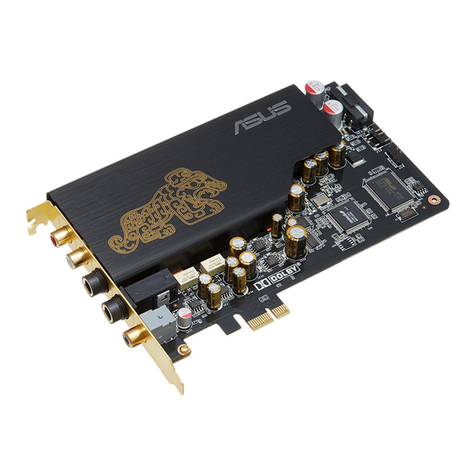
Asus
Asus XONAR ESSENCE STX - Sound Card - 192 kHz user manual
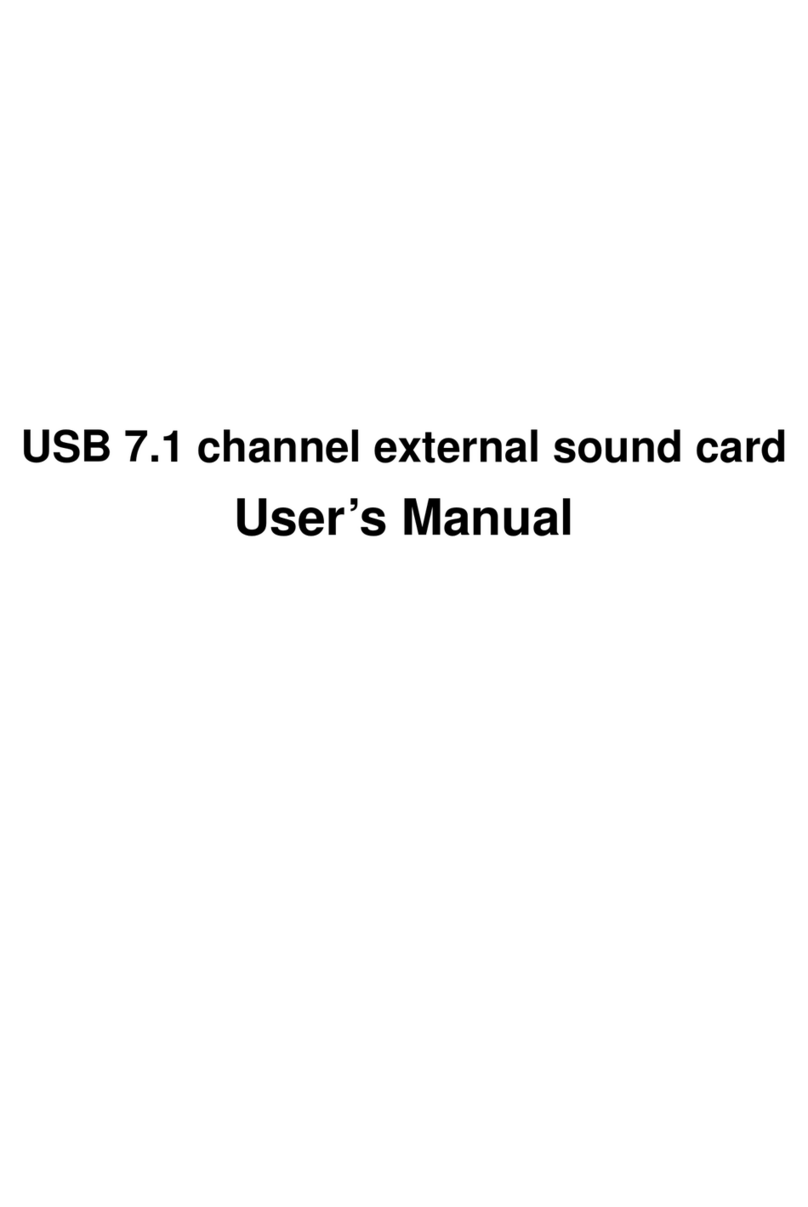
GWC
GWC AA1570 user manual
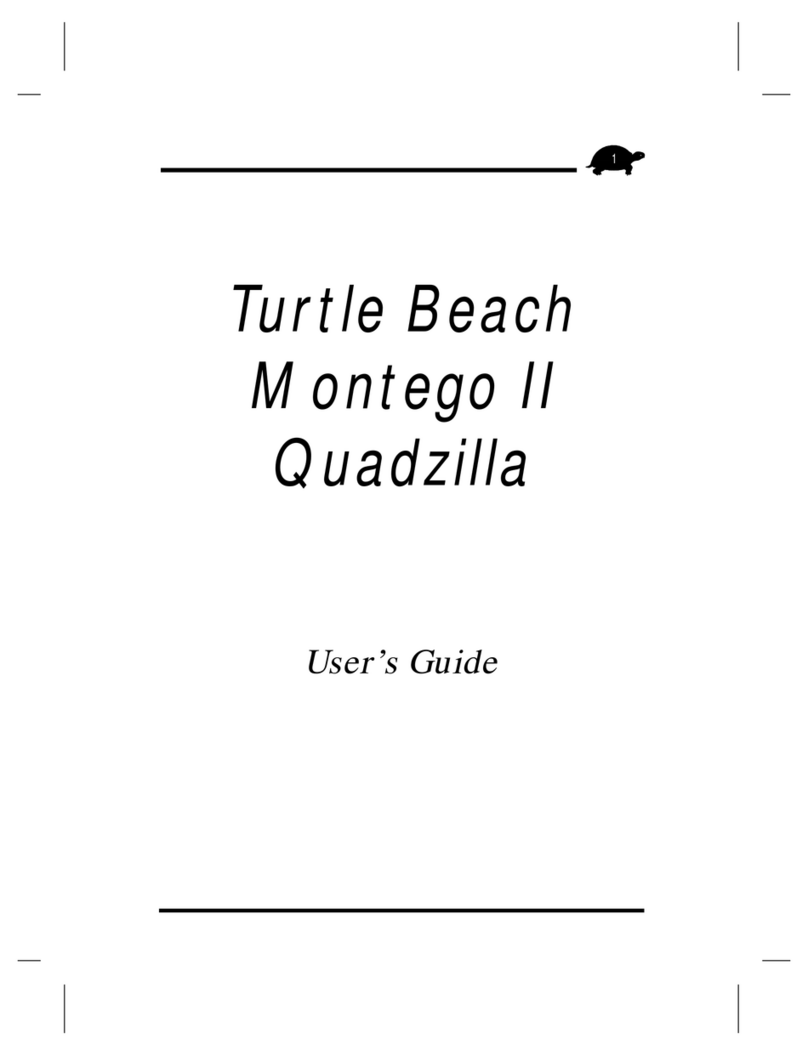
Voyetra Turtle Beach
Voyetra Turtle Beach Montego II Quadzilla user guide
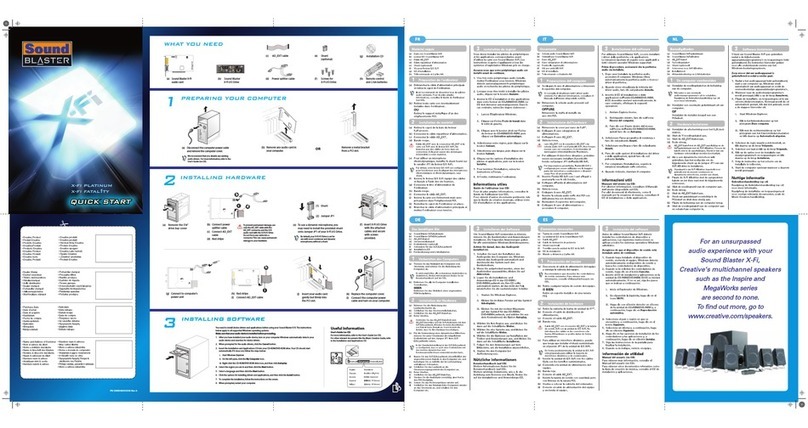
Creative
Creative X-FI FATAL1TY - SB X-FI PLATINIUM FATAL1TY QUICKSTART FRONT EN FR DE IT ES... quick start guide
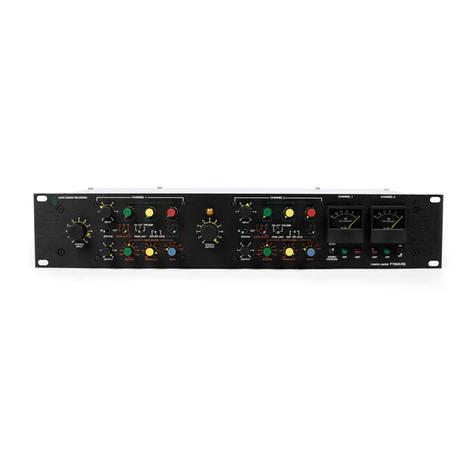
Q2 Audio
Q2 Audio Compex F760X-RS user manual
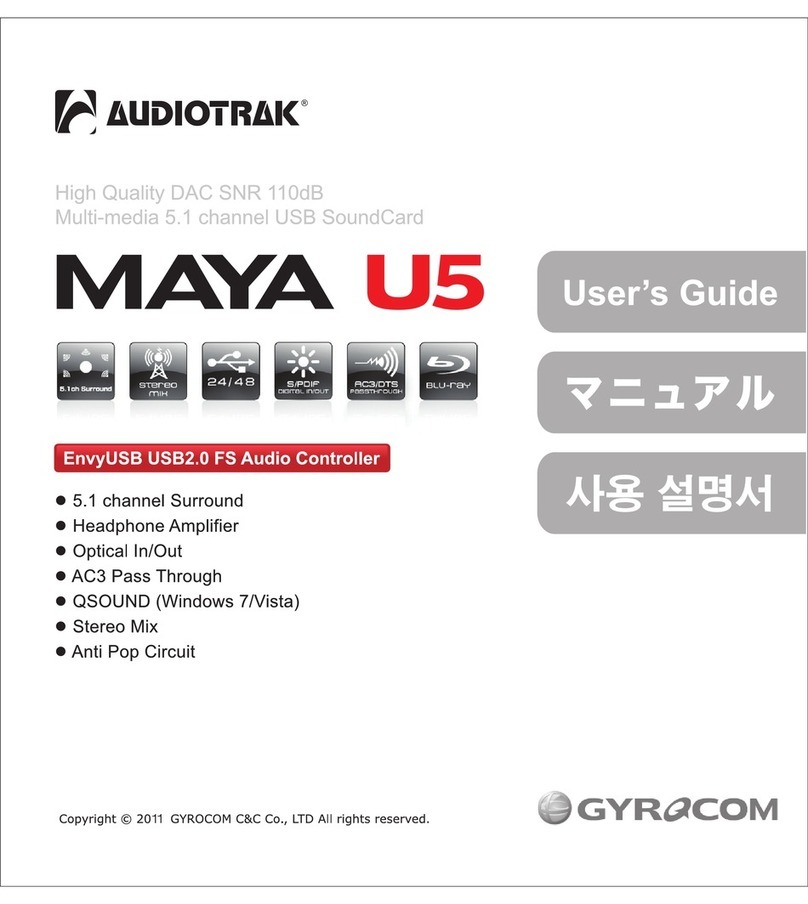
Audiotrak
Audiotrak Maya U5 user guide
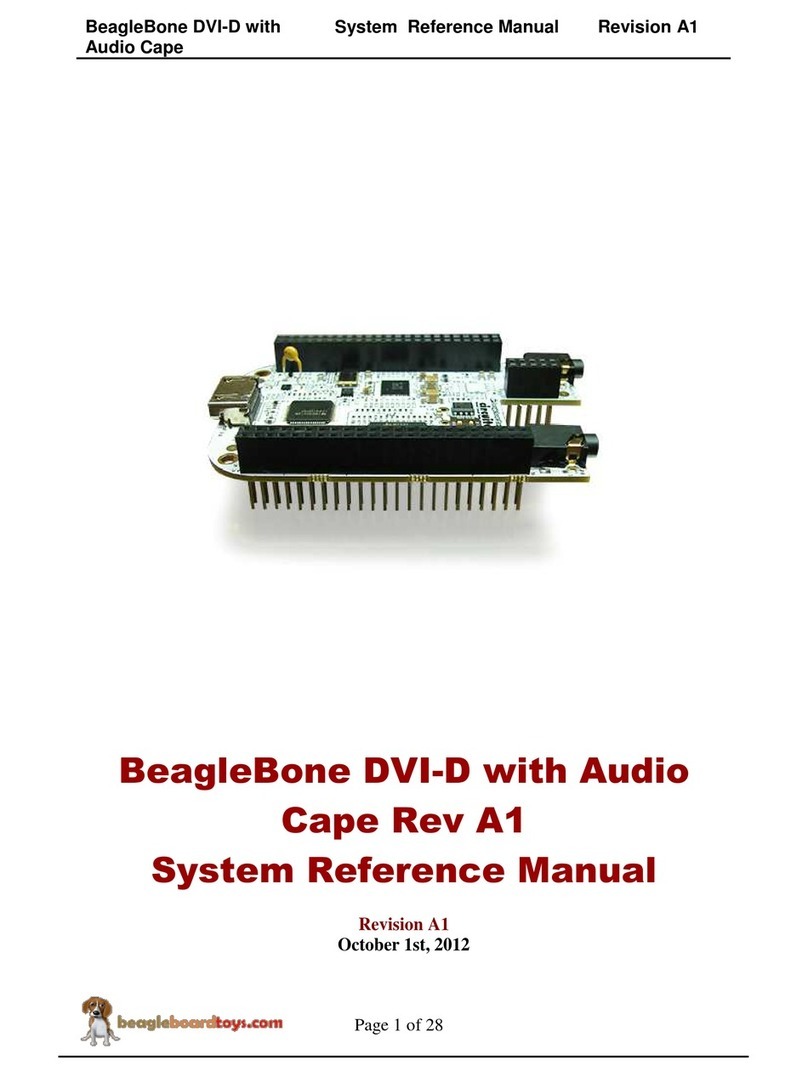
BeagleBoard
BeagleBoard BeagleBone DVI-D System reference manual
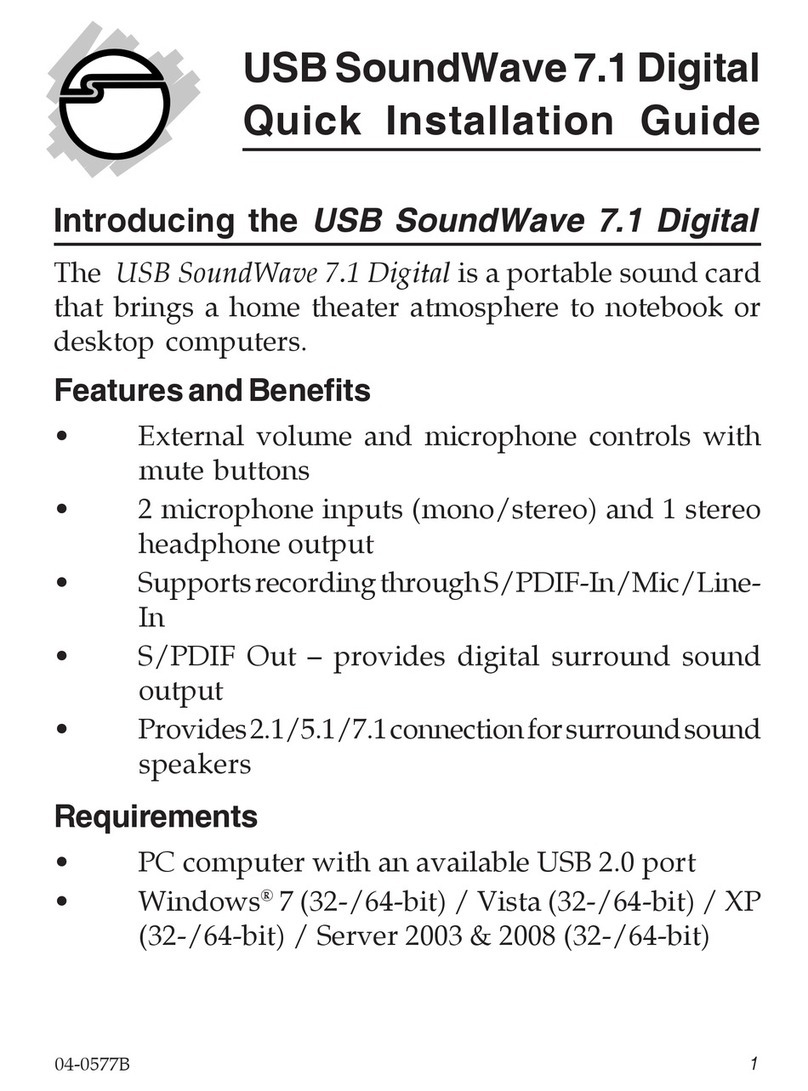
SIIG
SIIG USB SoundWave 7.1 Pro Quick installation guide
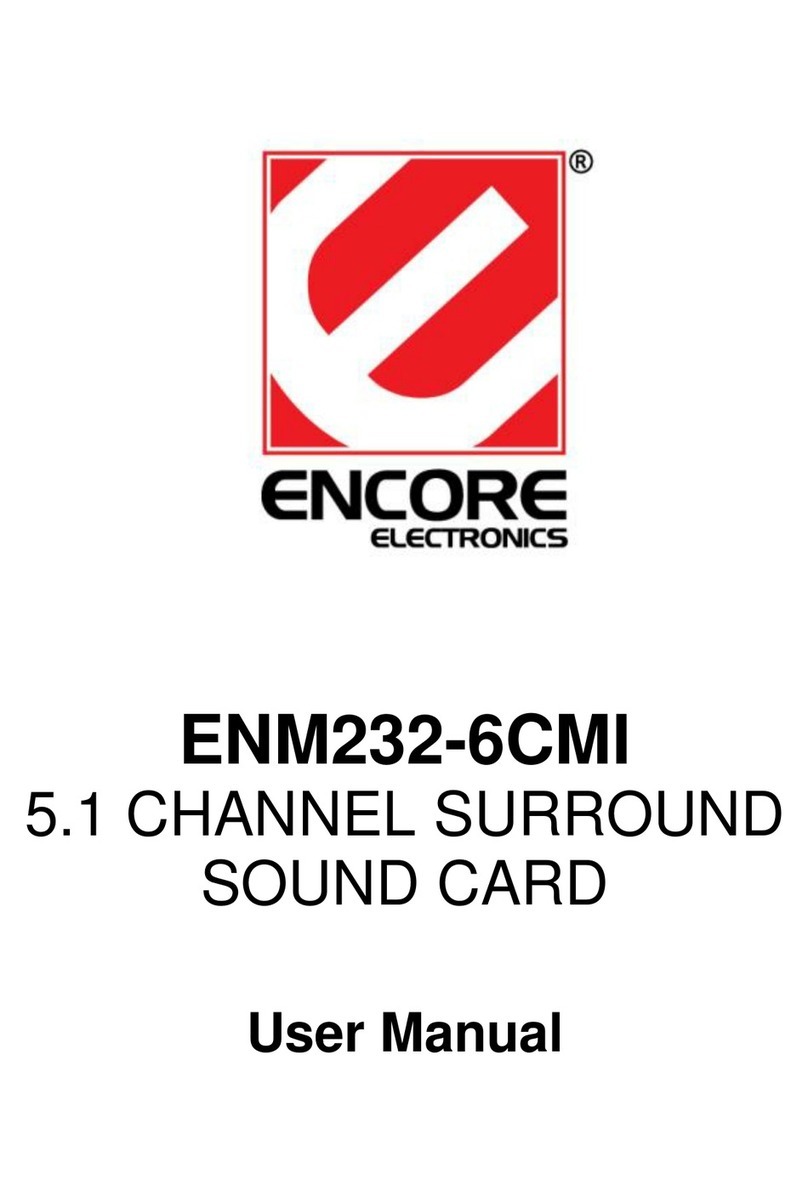
Encore
Encore ENM232-6CMI user manual
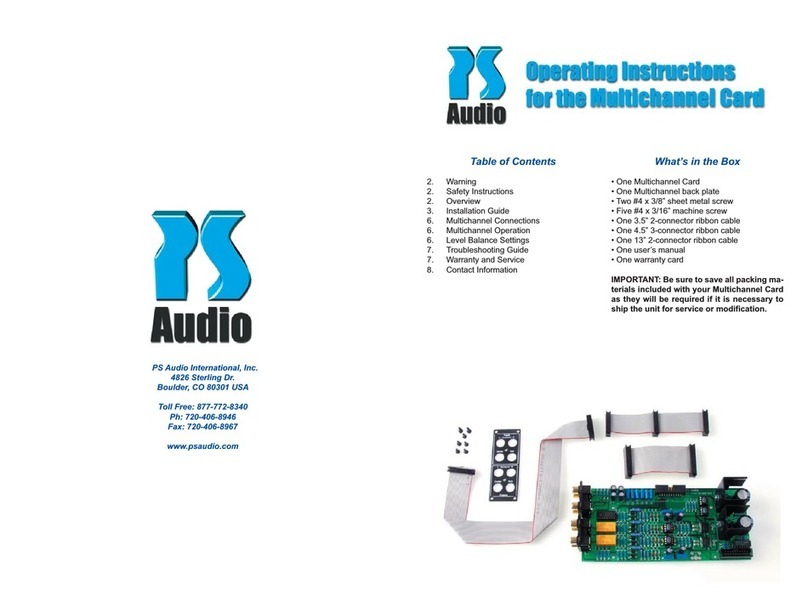
PS Audio
PS Audio Multichannel Card manual
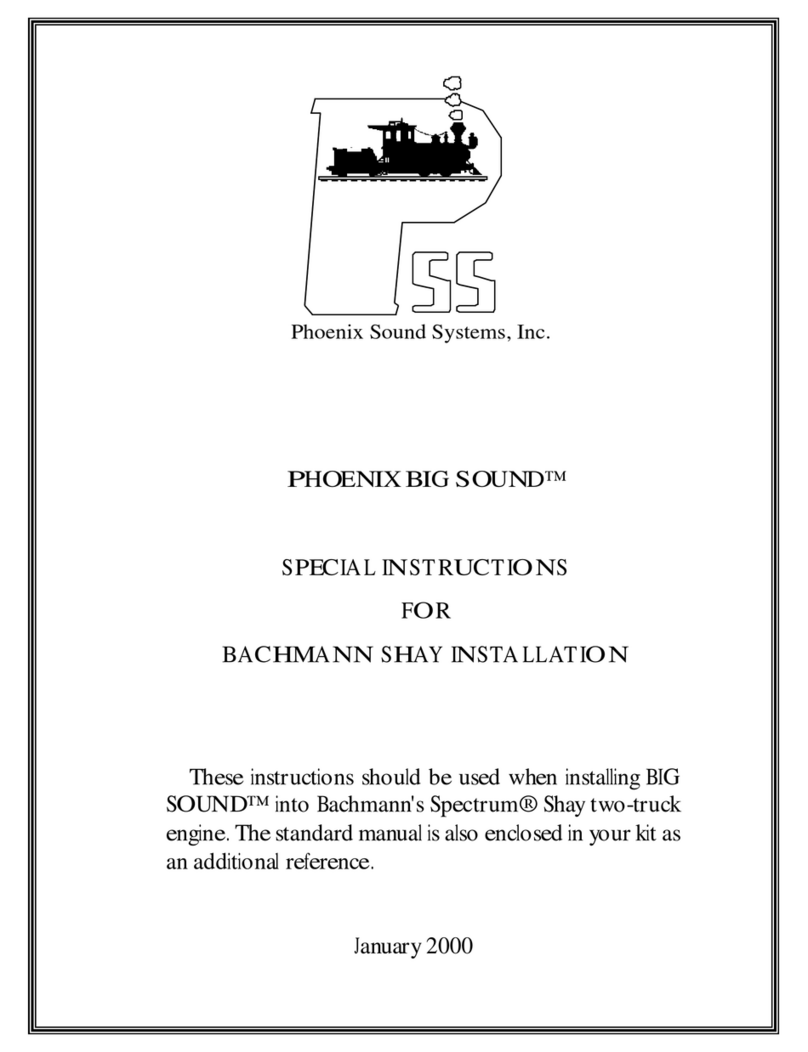
Phoenix Sound Systems
Phoenix Sound Systems PHOENIX BIG SOUND Special instructions for installation and use
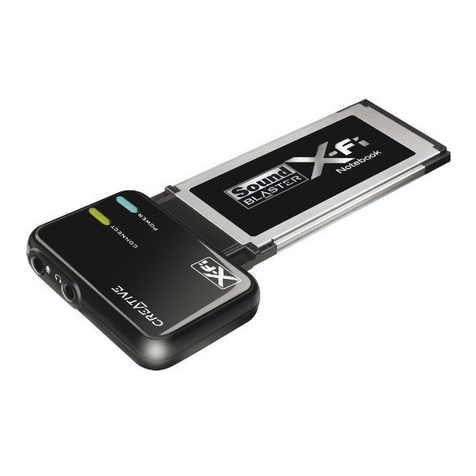
Creative
Creative Sound Blaster X-Fi user manual
